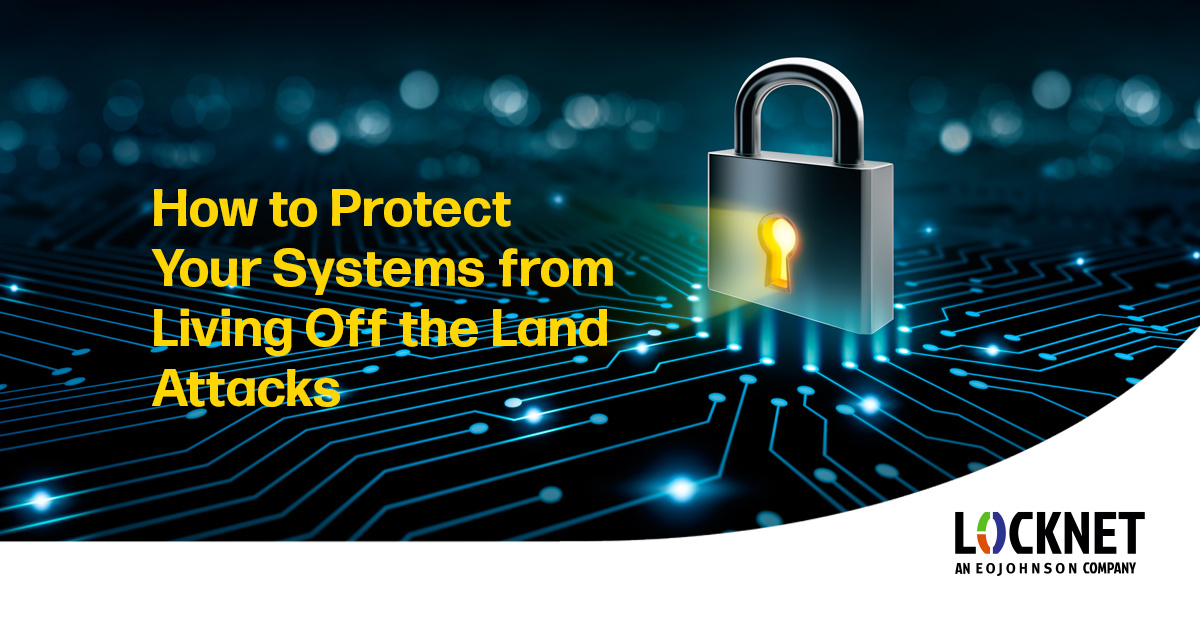Industries We Serve
World Class IT Support & Service
Real People. Right Now.
About Locknet® IT Services
From the first hello, the Locknet® team is dedicated to serving you and your needs.
Real People. Right Now.
From the first hello, the Locknet® team is dedicated to serving you and your needs.


Cybersecurity threats come in many forms, but one of the sneakiest and hardest to detect is what’s known as a "Living Off the Land" attack. These attacks take advantage of tools and features already built into your computer or network, making them difficult to identify and stop. In this blog, we’ll help explain Living Off the Land attacks, how they work, and what you can do to protect your systems from within.
Living Off the Land (LOTL) attacks get their name because they involve hackers using legitimate software, tools, or processes that are already part of your system. Instead of introducing new malware that might trigger alarms, cybercriminals repurpose existing tools to carry out their malicious activities. Because they use tools and programs that are already trusted by the operating system, they often bypass security checks, giving attackers a free pass to hide in plain sight. LOTL attacks usually follow these steps:
The main danger of LOTL attacks is their stealth. Security systems are typically designed to detect foreign or suspicious files, but when attackers use trusted tools, these systems may fail to recognize the threat. Additionally, because LOTL attacks rely on tools needed by your employees and IT teams, blocking these tools outright isn’t an option.
In 2024, the Cybersecurity and Infrastructure Security Agency (CISA) issued a strong advisory to critical infrastructure organizations and technology manufacturers, stressing the importance of CISA’s guidance for defending against this significant threat. But the detection and prevention of LOTL attacks should be considered by all organizations. We outline some ways to do so.
While detecting LOTL attacks can be challenging, it’s not impossible. Here are some strategies that can help:
Monitor system behavior
Set up monitoring tools to watch for unusual patterns or behaviors on your network. For example:
Behavior-based detection can reveal when something is off, even if the tools being used are legitimate.
Most operating systems and software tools allow you to log activities. Turn on logging for programs like PowerShell and WMI. Then, regularly review these logs for strange or unauthorized activity.
EDR tools specialize in detecting and responding to suspicious activity on devices, even when the threat comes from legitimate software. These solutions can flag potential LOTL attacks and help you respond quickly.
“System hardening” means making your systems as secure as possible so that attackers have fewer opportunities to exploit them and move laterally within your systems. Here’s how you can harden your systems against LOTL attacks:
Give employees access only to the tools and data they need to do their jobs and restrict administrative privileges to only those who truly require them. By reducing the number of accounts with high-level access, you limit the damage attackers can do if they gain entry.
Remove outdated or unused software that could serve as an entry point for attackers.
Regularly update your operating system and software to close known security gaps. Pay special attention to critical patches that fix vulnerabilities attackers are known to exploit.
MFA requires users to verify their identity with more than just a password, such as a text message or biometric scan. This makes it harder for attackers to gain initial access.
Divide your network into smaller sections so that if an attacker gains access, they can’t move laterally through your entire system. Think of it like shutting doors to limit where an intruder can go.
Always have secure, up-to-date backups of your important data. In the event of an attack, backups allow you to restore your system without paying a ransom or losing critical information.
Consult with cybersecurity experts to test your systems for weaknesses. These simulated attacks can help you find and fix vulnerabilities before real attackers exploit them.
Living Off the Land attacks are a serious threat because of their stealth and use of legitimate tools. However, with proactive monitoring and robust system hardening, you can significantly reduce your risk. Remember, cybersecurity isn’t just about defending against external threats. It’s also about protecting your systems from within.
As a Managed Security Service Provider, the team at Locknet is here to help you with the right tools and practices, so you can outsmart attackers who are trying to turn your own resources against you.
Cybersecurity

Onalaska, WI Waterloo, IA Wausau, WI Eau Claire, WI Burnsville, MN
You are now leaving locknetmanagedit.com. Please check the privacy policy of the site you are visiting.